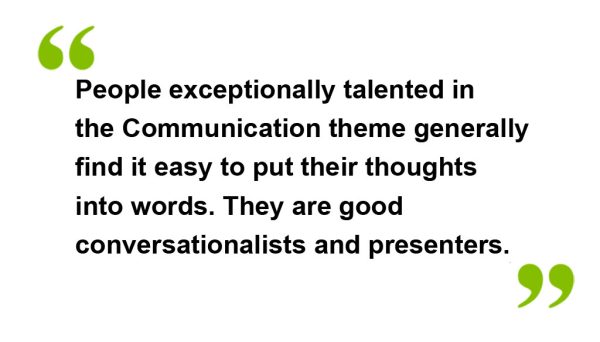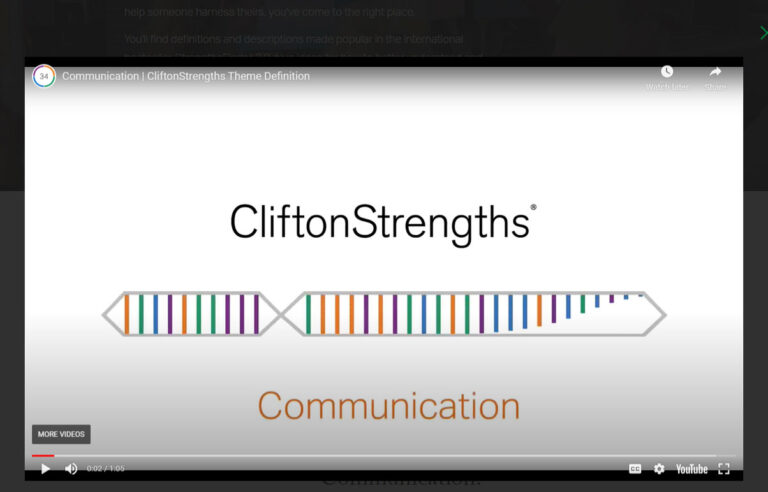200 times! 200 x 20 minutes = nearly 67 hours. This is the amount of time that Dr Jill Bolte-Taylor practiced her TED Talk, My Stroke of Insight, where she tells the story of her experience with having a stroke. I recommend it, Dr Jill is compelling.
Was she a natural speaker?
I have spent some time researching the opinions of scientists, psychologists, psychiatrists, early childhood development experts and others to see if there is a majority view on whether good communicators are made or born. Turns out there is a lot of variation in opinion.
Everyone possesses talents in some measurein 34 talent themes, according Gallup’s CliftonStrengths research. The talents are like tools in a toolbox and some you pick up every day and some you don’t use so much and some, not at all.
Communication is one of the CliftonStrengths.

These guys take it to the next level. They demonstrate that exceptional communication goes beyond just delivering speeches or writing books. They utilize various forms of communication, including activism, humour, storytelling, and advocacy, to convey their messages effectively and impactfully.
If you have Communication in your Top 5, remember a talent becomes a strength with investment, just like Dr Jill practicing 200 times honed her communication talent. Here’s a challenge for you today:
Identify your most beneficial sounding boards and audiences — the listeners who seem to bring out your best communication. Examine these individuals or groups to learn why you are so good when you speak with them or to them, and look for the same qualities in potential partners and audiences. (© 2023 Gallup, Inc.)
What about those of us who don’t have Communication in our Top 5 or even our Top 10 strengths? There are a number of tactics you can employ.
- Collaborate with someone who does. They can either take front and centre in the communications aspects of what you are doing OR they can go over your work and support you with their advice. Finding it hard to find words for your thoughts and feelings? Ask your Communicator team mate.
- Ask yourself, “If I were to film someone using Communication, what actual behaviors would I be filming? What would it look like?” This could include including stories, and metaphors in your speeches. It could include the listening skills of communication. There are many aspects to communication. So, having established that behavior …
- Look at your strengths profile and determine how you could leverage your strengths to communicate. Remember for the person high in Communication, it is like speaking their “native tongue”. For us who don’t have it in our top strengths, it is a little harder and requires a little more effort and intentionality. For me, it means thinking ahead of time what stories I might like to include in a presentation. I have Individualisation in my top 5, so I know I’m better at communications one-on-one and will try to do that where possible. I also have Input in my top 5, so I will do a lot of listening and information gathering that I can use in feeding back to people.
What about you? What do you employ to communicate with others?
You can improve your communications knowing your strengths and how to employ them.
I could help you with that.


